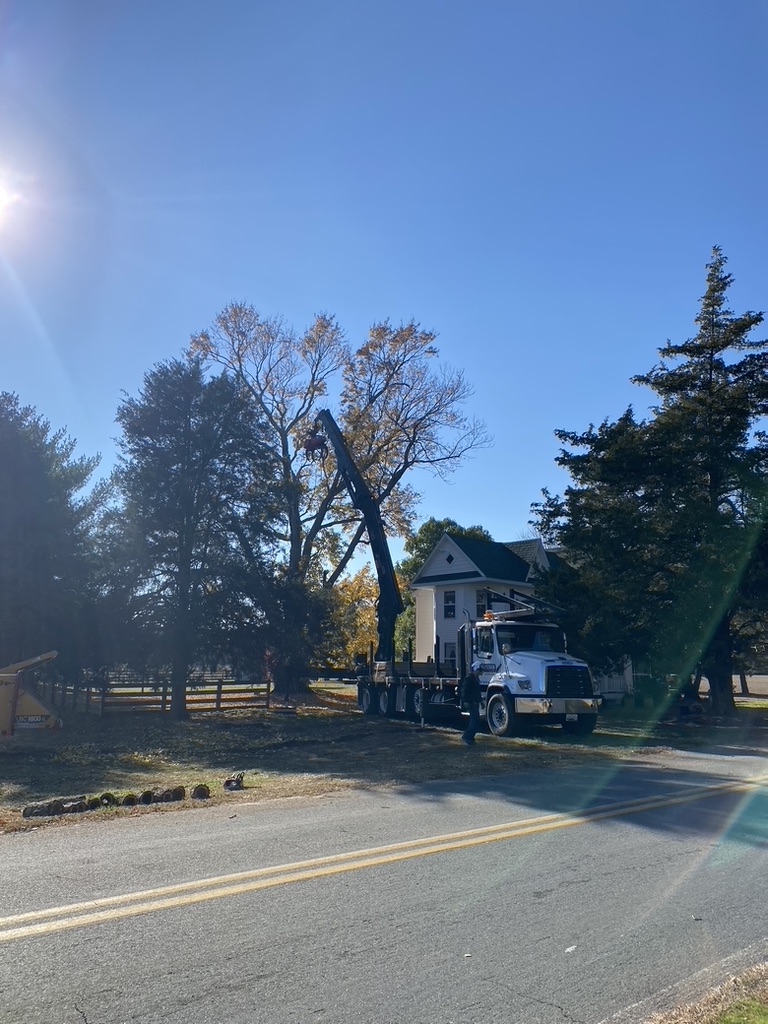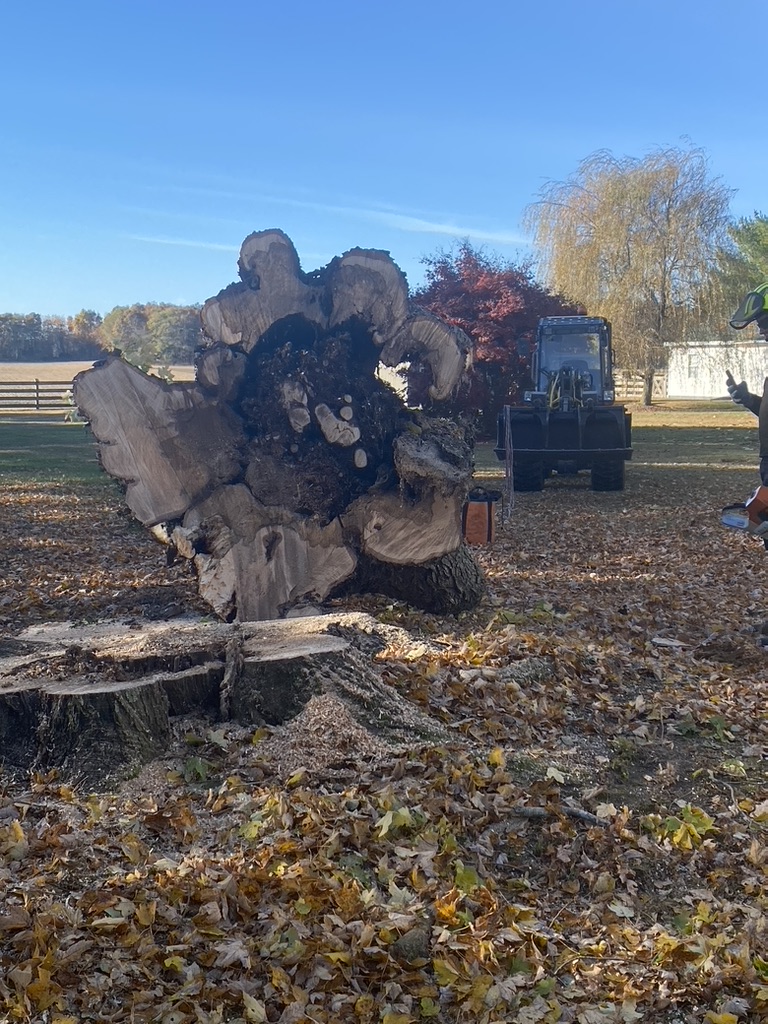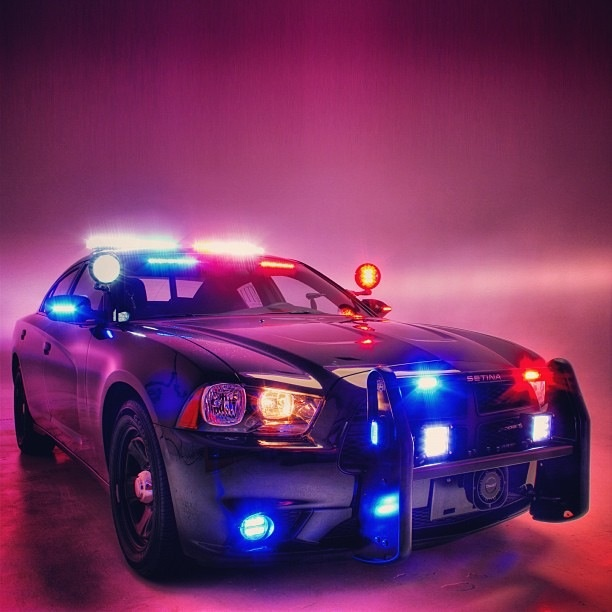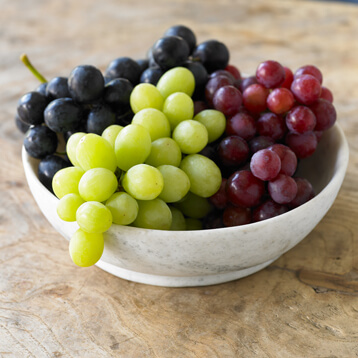Home » Posts tagged 'elfidd'
Tag Archives: elfidd
As the year ends.
There are no clouds as I write this post. I can only wonder what our eyes will see, on this, the last sunset in 2023.
It was just 31 hours until the end of the year, and outside daughter Kathryn’s window, a glowing sunset did appear. Far off to the west across the Chesapeake Bay, the mighty sun was giving us its very best.
The wind in the air distributes the dust, which, combined with the clouds, gives a colorful thrust. It even reflects far below, to the creek, as its waters flow. It ends far off to the west, after giving us its very best.
Thank you, Lord, for all we see, majestic stuff created by thee.

Happy New Year, one and all.
And the leaves must fall.
I’ve written previously about my Paulownia (or Princess tree.) They are a fast-growing tree that originated in the Orient. An interesting thing we’ve found over the years is that the tree loses its leaves each year with the first good frost.
Here is a great Bio on the PAULOWNIA TREE should you be interested.
Our tree is approximately fifteen years old. During its first few years, I cut it off at the roots several times with a mower while cutting the grass. Eventually, to save the tree I put a wire fence around the base for a year or so. The backside, not visible here was lost some time ago during a harsh winter. You’re facing due north observing this image.
Within the past few weeks, we had to have an old Maple and a Black Walnut tree cut down.
The Black Walnut
The Maple
To give you some perspective on the size of these trees, the boom on the truck extends 94 feet. That portion of the Maple is hanging over our home, specifically, Mary Agnes’ sewing studio/Quilt shop. She loved that Maple, especially the red buds that came out each year. The tree constantly harbored food for a myriad of Wood Peckers, Bats, Owls, and others throughout the seasons. As she sat in her studio watching the demise of an old friend, tears welled in her eyes, as a Barn Owl flew out of a large rotted portal and lit upon a close by Yellow Pine. “His home will be gone, no more screech during the night.”
As you can see by looking at 2 o’clock on Maple’s trunk, little support was left for the part hanging over the Little Woman’s Quilt shop. I’m sure the Owl will find a new home and trees in the surrounding woods shall provide the necessary insects for the Woodpeckers.
As a side note, that is a Weeping Willow in the background. Appropriately named, as it was a gift from good friends in October of 2012 in memory of the passing of Mary Agnes’ brother Bobbie. As the winds blow, the Willow weeps.
So, for now, a tree shall not fall upon our home on a highly windy day, I feared this during several weather events this past year. Nor-easters and tropical storms frequent the Maryland coast just 30 miles away. I shall sleep peacefully, my ear will not be tuned to the gust of the blowing wi
Should you be interested in just who makes their home in a tree trunk, check out ZOO NERDY.
Lite up the season
Thanksgiving dinner prep work is underway at the Rooster’s house. Today it is the filling for the bird, and does it smell good. We passed te baton several years ago, Kathryn had us all, about thirty, last year. Sarah has the honor this year. No taking the ferry on Turkey Day to cross the Wicomico, guessing the operator has the day off, what could be a 15 minute trip will now take 35. Bummer!
Saturday of this week will be the annual Wicomico Yacht Club Boat parade. For the past month in conjunction with the Marine Corps “Toys for Tots” program, toys have been collected and will be distributed up river in the Port of Salisbury.
We will break out some festive things to decorate the house this weekend and they shall remain up until 6 January, the Epiphany (/əˈpɪfəni/ ə-PIF-ə-nee), also known as “Theophany” in Eastern Christian tradition,[1] is a Christian feast day commemorating the visit of the Magi, the baptism of Jesus, and the wedding at Cana.[2]
The wife is a “Facebook” reader, never does she post. On occasion she may ask the Rooster to send a congratulatory note or condolences for us both, that’s about the extent of her correspondence. She has a Quilting friend up in Alaska and that friend recently had a Facebook post tht went something like this:
I don’t mean to be a Grinch, however —to those who who choose Christmas lights, decorations in your yards and the like, please avoid using lights of flashing red and blue together. Every time I come around the corner, I think it’s the POLICE and I have a panic attack. I have to brake hard, throw out my wine, fasten my seat belt, turn the radio down and stash the gun under the seat. All of this while trying to drive at the posted speed limit. It’s just too much drama, even for Christmas. Thank you for your cooperation and understanding.
Sometime we just need to laugh!
I hope all enjoyed their Thanksgiving feast.
Don’t forget to check on the elderly!
ZZZZZZZZ
Do you dream, I certainly do. But, for the life of me I seldom can remember them. Oh I’ll remember a highlight or two every now and then but never the whole thing. Just recently I was Bass fishing ith grandson Tommy, I know where we were, I remember drinking Apple Cider, did I catch something, can’t remember.
Now, the little woman cuddled up next to me, she’s different, people, places, colors, what a memory. Then on wake-up I get the full report. Hold on a minute says I, I gotta Pee. Some things just can’t wait, but this age when you gotta go, you gotta go.
Upon return after the wake-up call, it’s time to listen. The fact that she’s reading each day bout the LDS Church, the (Golden Tablets) caves and Joseph Smith has obviously stimulated her recant ability. Here below is my recollection of the event.
The Dream ZZZZZZZ
Opening her eyes she looked to her palm. What is this envelope? OMG, it’s a medication pouch from the prison. She hadn’t seen one of these since she retired as a nurse working in a prison, and that was years ago. What is happening she thought, Is this a dream, a step back in time, what pray God was going on?
She started to lift the envelope’s flap, but a voice stopped her. “ No need to look, there’s money in there.” She was told that she was to take the envelope to Zion church. But Zion church where, she thought to herself. In the area of Maryland where she lives there is a Zion church.There is even a Zion Church Rd. Was this where the voice wanted me to go? She closed her eyes and tried to think.
It was not long when she found herself in front of a church door. How she wound up there, she had no idea. As she reached for the door’s handle, it magically opened. Standing in front of her was a priest in a majestic robe of pink.”Is this Zion church,” she asked? Looking back over her shoulder she could tell she was a in Hartford, CT. Off to her right was the campus of the University of Connecticut. How could that be, the University is 25 miles away in Storrs. How did I ever get to Connecticut?
The priest was of no help she recalled, trying her best to remember what transpired. However, upon entering the church she was met by granddaughter Samantha, Samantha’s husband Zed, and their four children. They were so happy learning that Grannie was reading and learning about the Nephites. Of late, to better understand their religious followings, she had been reading “The Book of Mormon.”
As she looked around she realized she was awake and was sitting up in bed. Money in a pill envelope? Why Zion church? A priest in pink vestments? Why was UConn in Hartford and why was she there? What did all that mean? And, what is a Nephrite? And, what about those tablets in a cave?
Perhaps tonight, I can pickup where I left off and get some answers she thought. Time to put her sneakers on and take her two mile walk, A daily ritual for this old gal who turned eighty recently. Read on old lady, she says to herself.
Don’t forget about the elderly, we need all the help we can get. As an end note, can’t we just all get along, be KIND to one-another!!!!! Ephesians 4:32. Be kind and loving to each other, and forgive each other just as God forgave you in Christ.


Return to Maryland
We stayed in Connecticut for four days. My enjoyable highlight is the fact that daughter-in-law Beth always has a grape bowl on the table. Grapes are probably my largest sugar downfall. Granddaughter Jill helps me to keep them from spoiling.
Does eating grapes raise your blood glucose?
These glucose molecules get absorbed quickly and can raise blood sugar levels very quickly. On the other hand, Grapes do not cause blood glucose levels to go up when taken in moderation. The glycemic index of grapes is toward the lower end, which means moderate consumption does not affect blood glucose levels. (Thanks Yahoo)
Thursday evening would be Rebecca’s HS graduation. I elected to stay back and watch the IT feed of the graduation. Luna and I enjoyed the production.
After the graduation, the large extended family returned to Matt & Beth’s home for a celebratory event. Great finger food and beverages prevailed. The star of the evening (Rebecca) would be off to the BUBBLE. Recent years have seen the senior class locked into this facility for all kinds of activities. A safe environment to enjoy an entire night of contests and activities.
We had one more full day with the Connecticut family before our Acela ride to Maryland and Amtrak’s station at BWI. On Saturday of that week, Matt would play UBER and take us to New Haven to catch the train. Once again a nice wheelchair, thanks to my private Red Cap. I tried tipping him, but he refused.
Once again we were seated in car #5, only two seats together this time. The seats are very similar in comfort and spaciousness to First Class airline seating.
The ride to Baltimore was uneventful and on time. The train journey time between New Haven and BWI Rail Station is around 4h 13m and covers a distance of around 269 miles.
Once again Elevators eliminated stairs and we were quickly at the shuttle P/U area. Our plan was to Shuttle to Rental Car Shuttle at the airport and drive home. This method would be cheaper than a trip on Bay-Runner shuttle to Salisbury. This method turned out to be effortless and we were in our KIA in no time.
The Kia was quite responsive in the get-up-and-go area. The side mirrors were horrible for my use. Having an SUV at home I was not comfortable with the close-to-the-road seats. But, all in all, it served its purpose. We would return this vehicle to SBY the next day.
We would choose “The Fishermans Inn” on Kent Island for a dinner stop. I would have Fish & Chips and Mary Agnes would dine with a Sea Food Platter. Shrimp, Crab Cake & Scallops were featured. For dessert, we shared a large scoop of Vanilla Ice cream, made on campus and fantastic.
Our ride the rest of the way home was uneventful. The greatest obstacle, other than beach traffic is sharing the road with the Deer. They never seem to cross at the signs erected by the State Highway Dept.

So, we had a great trip, we highly recommend Amtrak and Acela, should you be traveling the DC – Boston corridor. Thanks for stopping by and glancing at my Rooster Scratchings. Have a safe summer and don’t forget to check on the elderly. One benefit of old age is that your secrets are always safe with your friends … because they can’t remember them!

Way back in 1998
I pulled out my old computer recently and just meandered about, what was I was doing 15 years ago. Writing my first Blog is what I found. It’s hard to believe I’ve been doing this for so many years. So, this is what I did early in the day back then. The little woman was working as a Nurse back then, so no one was around to say “Are you ever going to get off that thing? Today she is retired and I swear, looks at recipes on Facebook all day long. she will deny this of course. I still go to Refdesk quite frequently, as well as the weather. I just love tracking and doing my own predictions on Tropical Storms.
All in all, my first Blog was not that interesting, read on if you wish, have a great weekend and Semper Fi.
My First Day with a BLOG
Blog, kind of sounds like a cold, or a zit or some kind of an affliction. My first day with a blog, now what do I do with it?
Well to start off I’ll let the world know how I start my day on the Internet.
My start up page is http//refdesk.com
Having spent twenty years in Connecticut I next go to http://www.courant.com/ to check on the local news and how the UCONN Huskies are doing in any given season. I’m a forty year Huskie fan. http://www.uconnhuskies.com/
Next up, but sometimes #1 is the weather. While in the Marine Corps, way back when, I was in Weather as an occupation with Rawinsonde as a sub specialty. http://usmilitary.about.com/library/milinfo/marineenjobs/bl68.htm
I use a variety of weather related sites www.nws.noaa.gov/ #1, my other favorites are www.accuweather.com and www.weatherunderground.com
During the Hurricane season I live by the National Hurricane Center. www.nhc.noaa.gov/
I have friends and family in CT, FL, CA, and affections to Key West, FL, Pagosa Springs, CO, Flagstaff, AZ and Ireland and Germany. So, I usually check on the weather in those places.
Next it’s off to the Washington Post and Washington Times to get two diametric views on the news. www.washingtonpost.com
After the two DC papers I go to Google News, which I have preference settings in and glance over that. Next is onto my mail servers.
From then on I usually have a Memo Pad with notes on things to look up and it’s off I go. This all starts shortly after I get up, usually around 0500. Once downstairs it’s a hot cup of tea or coffee to start the day . During the day finds me Journaling, been doing that since 2011. My latest continuing read is “The Paris Review.” Want to make some changes in your life? Try reading “Atomic Habits by James Clear.” Thanks to daughter Kathryn for that one!
Here, I’ve given the world the start of my day for the start of a BLOG. I shall end this bantering with saying Cead Mile Failte
And Please, Don’t forget to check on the elderly!
Woof Woof
I’m going to share something from “The Paris Review,” it’s one of my yearly expenses and I’m reading of the works of many people past and present. What is the “Paris Review” you ask.
- The Paris Review, American literary quarterly founded in 1953 by Peter Matthiessen, Harold L. Humes, and George Plimpton, with Plimpton also serving as the first editor. It is an English-language review modeled on the independent literary magazines (also known as “ little magazines ”) published in Paris in the 1920s.
After reading this poem in the most recent review, I could not but look at my own pets down through the years, especially dogs.
My dogs started with a Mutt named Lady, I can not remember when she crossed the Rainbow Bridge. However I do know the loss of a pet can be an emotionally devastating experience. I do know Lady was my pal early in life back in the 40’s. Somewhere around the age of 9 or 10 we adopted Scarlet & Amber, Dalmations from the same litter. They were inseparable and lasted at most, and I’m guessing, a month? They had to be returned as they were not good house pets I was told.
Next was Co Co, full name CoCO Mimi Celest by Hecht. I turned that girl into a hunting a dog, ten yards out, back and forth, Quail, Grouse, Pheasant or whatever, kick it to the air she would. She loved the hedgerows of Burlington County, NJ back in the late 50’s and early 60’s. Most of those hedge rows and birds no longer exist. The only downfall of this girl was, she hated getting her feet wet. Whenever we came to a stream, I’d cross, lay the Shotgun down and return for CoCo’s ride across the water.
In 1969 or 70 I brought home from work a medium sized scruffy wire haired dog named Ping. The name, she used to lay beneath the Ping Pong table at the firehouse I worked at. An old LaFrance (1947) 100 ft aerial ladder truck co. in Hartford, CT is what I rode. Back in the day I like to say.
The Mrs. wasn’t too keen on this pathetic looking creature and I remember her saying, “If he so much as nips once, any of the children, out he goes. The kids, a new born, one, 1 yo and another age 3. Never a nip, had that wonderful pet for a good ten years. Called her Ping the Wonder Dog back in the day.
A Yellow Lab with the name of Saucy would also join us those years in Connecticut. Once the fruit of the vine appeared, we continuously found Cucumbers on our lawn from neighbors gardens, the Lords bounty.
After my retirement from the CT State Police we moved to the Eastern Shore of Maryland, a sort of compromise between Maine, the Mrs. choice, and Florida, my choice. We wound up getting a Black Lab – Mix, and what we suspect was the father, a Collie named Chief. That Mutts name was Troop.
We would have a Marsh and a Duke along the way. Next to last we had a Maggi, a Standard Poodle and presently, another Standard Poodle, Benjamin.
Many of the atributes mentioned in the poem I am about to share existed in one or all of our past canines.
Without further ado, I share with you.
| Erica Jong Jubilate Canis (With apologies to Christopher Smart) For I will consider my dog Poochkin (& his long-lost brothers, Chekarf & Dogstoyevsky). For he is the reincarnation of a great canine poet. For he barks in meter, & when I leave him alone his yelps at the door are epic. For he is white, furry, & resembles a bathmat. For he sleeps at my feet as I write & therefore is my greatest critic. For he follows me into the bathroom & faithfully pees on paper. For he is almost housebroken. For he eats the dog food I give him but also loves Jarlsberg swiss cheese. For he disdains nothing that smells— whether feet or roses. For to him, all smells are created equal by God— both turds and perfumes. For he loves toilet bowls no less than soup bowls. For by watching, I have understood democracy. For by watching him, I have understood democracy. For he turns his belly toward God & raises his paws & penis in supplication. For he hangs his pink tongue out of his mouth like a festival banner for God. For though he is male, he has pink nipples on his belly like the female. For though he is canine, he is more humane than most humans. For when he dreams he mutters in his sleep like any poet. For when he wakes he yawns & stretches & stands on his hind legs to greet me. For, after he shits, he romps and frolics with supreme abandon. For after he eats, he is more contented than any human. For in every room he will find the coolest corner, & having found it, he has the sense to stay there. From issue no. 71 (Fall 1977) |
| Don’t forget to check on the elderly. theRooster |
Jury Duty
Most of what you read here was original text.
21 January, 2023
Jury Commissioner
Circuit Court
Somewhere, MD 20***
Dear Commissioner;
I would love to do my civic duty, but honestly, I’m just tired.
Medically, I’m a real piece of work. Five cervical & Lumbar spinal surgeries have helped on the road to being tired. I can just vision the following taking place. I’m sitting in the Jury Box and get up to move, i’m getting numb again. “Juror # 7, where are you going?” “Sorry judge, just an old injury acting up,” I say. Neuropathy leads me to constantly raise my arms, #7, do you have a question? ” “ I’m sorry, no your honor I do not have a question.” The neuropathy also leads to my legs impulsively shooting straight forward at times. Not good should I be sitting in the second row of the Jury Box. “Juror #4, what are you on the floor?”
I retired from the State Police way back in1988 and found MD, that’s Postal speak for Maryland.. The first 12 years were delightful. We found a 100 year old house for sale next to the spillway of a gorgeous pond. After two years of work we opened this home as a B&B. Long about the year 2000, enter Cardiac issues. It all began with Atrial Fibrillation. A subsequent Heart Attack, two Bypass operations, five cardiac stents and on February 1 of this year I obtain my third Pacemaker. I’m much like that well known Rabbit, I just keep on ticking.An Electrophysiologist also added a third lead to my new device, one of my Valves is not operating properly. Never heard a word about the consonants though. I’m guessing I don’t have a problem there. Oh, and I lost count on the number of Cardioversions, scheduled and unscheduled. That’s the thingy where someone yells “CLEAR!” Now that would be excitement were I seated in the Jury Box and needed one, wouldn’t it?
I do tire quite easily and on most afternoons I catch a nap for an hour or so. From the bench once again, “ Excuse me counselor, would someone please wake-up Juror #7.” My Long Term Memory is fantastic, the Mrs says my short term memory does not exist. If it’s not written down it’s not going to happen. Did I mention my hearing, well I’m not even going to go there. just ask the wife. “Turn the Volume down,” she hollers from the upstairs.
I stay busy spoiling my seven Hens, chickens, not wives, and have numerous bird feeders as well. For my eightieth birthday I got a feeder with a camera that takes great pictures. I read a ton, write a blog, “When the Rooster Crows” @ https://elfidd.com. In season Uconn Woman’s Basketball keeps me awake after Wheel of Fortune and Jeopardy. Phillies baseball and Eagles football also occupy my time in their respective season. I grew up in the Philadelphia area in case you were wondering. The O’s are liked also, though not if they ever play the Phillies in the World Series. Hey, how about the UConn men, won the NCAA national title this year in basketball.
One other caveat to the March date of your SUPENA. I will turn Eighty (80) in March, pending good results from my new pacemaker of course. Our son and his family reside in Connecticut and we were hoping to spend a few days with them during my birthday week. A night out at a Michelin rated restaurant is worth a trip north on occasion. It was a seven hour trip some years back, now it’s at least two days. Some nice people work at those Holiday Inn Express’ and they feed you breakfast also. I always get a Banana for the road. it’s been said they help constipation. Lord knows I don’t want to eat no bananas were I on Jury duty.
” #7, where are you going in such a hurry?”
Our two daughters followed us here and reside in the county. they check on us often. In total we have had 3 children, 9 Grands and 6 Greats. We have been blessed.
So Ma’am, should you still wish for me to sit in a Jury Box, you have the power to do so. But Honestly Commissioner, I’d love to be excused. Be my Hero, say YES—-Please. The only good of me being there would be that my wife of 58 years would have the house to herself for a month. I’m thinking it would be a lot quieter also.
With all do respect,
The Rooster
Yes, my friends, I was excused.
Don’t forget to check on the elderly!
Happy St. Patrick’s Day
- A family addition
- A Friend
- A Post from the past.
- About me
- Around the House
- Around the Village
- Canada 2016
- Family
- Food
- Happy New Year
- Journaling
- Keeping Busy
- Merry Christmas
- Mug Shots
- On the road with the Rooster
- Our first frost
- Remembering
- Sharing
- Travel
- Uncategorized
- Where in the world
- _Maryland

Weekly Quote
“Do not regret growing older. It is a privilege denied to many.”
—Mark Twain
An Old Pen Shop Is Mightier Than the Death of Cursive
March 15, 2023
I share with you this Blog posted by Jack Limpert, long-time Editor of the Washington Post. Jack’s Blog, About Editing and Writing, can be found @ https://jacklimpert.com
This writer loves Pens also. A Sharpie S-Gel 0.7 is my go-to. Like John Wayne back in the day. I always carry. “If it’s not written down, it never happened.”
From a Washington Post story by Tara Bahrampour headlined “An old pen shop proves mightier than the pandemic and the death of cursive”:
The enormous patina-green fountain pen juts over the sidewalk on F Street, two blocks from the White House, its gold nib pointing down at the front doors like a command.
“Fahrney’s Pens,” the sign in calligraphy reads. Inside, the narrow space with 28-foot ceilings is a cathedral to its acolytes, its objects of worship gleaming under glass counters. Ball or fountain. Plastic or rose gold. Steel or acrylic resin, redwood or ebony, matte or shiny.
“Allow me to dip it,” store manager Phuntsok Namgyal says softly. He bathes a nib in a bottle of blue-black ink and hands a fountain pen to a customer, who dashes off his signature.
“Perfect,” the customer says. “It makes you want to write more.”
In its 94 years, Fahrney’s has outlasted the advent of mass-produced ballpoints, the rise of email and text messages, and a pandemic that decimated newer downtown businesses all around it. Its staying power can be attributed to a base of loyal old customers, along with a new generation raised on the digital but enchanted by the mechanical.
But the future of a shop dedicated to luxury pens will depend on more people wanting to write more. Some parts of the country have become pen-shop deserts, said Jonathan Weinberg, an artist and curator of the Maurice Sendak Foundation in Ridgefield, Conn., a state where he knows of no pen shops. “It’s a dying breed.”
One reason for Fahrney’s resilience may be its location.
“There’s just so many potential buyers, between senior government employees, law firms, lobbyists, accountants” in Washington, D.C., said David Baker, executive director of the Writing Instrument Manufacturers Association. “There is a significant group of consumers that like to hold a fine writing instrument in their hand.”
Susan Ebner, 67, a lawyer from Potomac, Md., has been coming to Fahrney’s since the 1980s; on a visit last week, she reeled off the names of pens she had bought there and the year she had bought each one. Solomon Dennis, 79, of the District came in for refills.
“I was dealing with this shop when they were at the Willard,” he said, referring to the storied hotel. Fahrney’s moved to its current spot around the turn of the 21st century.
Dennis, leaning on a copper-colored walking stick, recalled the first pen he bought at Fahrney’s, in 1974: a Montblanc Diplomat. “It was a hundred and fifty dollars then; I think it’s a thousand and fifty now,” he said. When he lost it, he cried for a week.
Pens at Fahrney’s range from $20 to nearly $5,000 and from themes like Harry Potter to King Tut. Some have historical connections, like the Fisher Apollo, a ballpoint pen that traveled to the moon and contains gas that allows it to work underwater, upside down, in freezing temperatures and at zero gravity. A National Zoo pen features pandas.
Once, Fahrney’s sold a $130,000 pen “completely covered in diamonds,” store owner Chris Sullivan said.
Robert Collie, 58, of Vienna, Va., inherited a Parker 51 fountain pen from his father, who died when he was 8. “Three years ago, my mom says, ‘Oh, I forgot I had this; it was your dad’s,’” he said. Last week, Collie came to the shop to buy a similar one for his son, who was turning 25.
“I’m thinking maybe a fountain pen with his name engraved on it,” Collie said.
Choosing a pen is personal. How do you tend to hold it? Is your lettering large and loopy? Do you close your L’s? Do you prefer the feel of a light pen or a heavy one? Flashy or subtle? Fine tip or broad?
“It shows their individuality,” Sullivan said.
Sullivan’s parents bought the store in 1972 from founder Earl Fahrney. Sullivan, 62, worked in the shop growing up and now co-owns it with his sister; his 83-year-old mother is still working, too, in the warehouse in Upper Marlboro. (“I can’t get her to stop,” he said.)
Fahrney used to tell of how the store once supplied the White House, Sullivan recounted, aides “running down the street, knocking on his door after the shop closed.”
Nowadays, in-person purchases account for just 15 percent of sales; the rest is online and catalogue, he said. Still, the pandemic hit the shop hard. Its doors closed for three months, and business still hasn’t returned to what it was. “Look across the street,” Sullivan said, gesturing at papered-over shop windows. “It’s horrible.”
Worse were the lives lost during covid: Chuck Edwards, who repaired pens at Fahrney’s for three and a half decades; Elizabeth Spinks-Bunn, who taught calligraphy and cursive classes; and Sullivan’s father, Jon. The shop now displays Edwards’s neatly folded navy-blue work uniform, “The Pen Doctor” embroidered on its front, in a shadow box by his repair bench.
The store still does repairs, though it is getting harder to find parts. It also sells stationery, journals, inks and calligraphy books, a small bulwark against the drift of a country that long ago dropped handwriting classes from school curriculums.
And yet the generation that didn’t learn cursive has somehow fallen for fountain pens — and their interest is helping drive demand. The average age of customers at Fahrney’s is 60, but it is dropping, Sullivan said.
“There’s a lot of young buyers — ‘young’ being people in their 30s — paying $1,200 for a pen,” said Baker, the association director. “From what I hear, during covid, a lot of collectibles and fine items became significant as people had time to browse and look at these things.”
Trends like urban sketching and journaling have helped spur interest in fountain pens in particular, said Weinberg, who owns around 250 of them. “With a ballpoint pen, your hand tends to get a little cramped,” he said. “Your hand kind of flies across the page with a fountain pen.”
Like many old-school technologies, they do have drawbacks: the ink staining your hands when you fill them, the risk of leaks on planes. But for young people, who are embracing typewriters and vinyl, the glitches are part of the charm.
“Just as with records, you had all the scratches and skipping,” Weinberg said. “Young people don’t have that history, so they tend to romanticize.”
And so it was last week that a gaggle of young people, members of the concert choir at Otterbein University in central Ohio, skidded to a stop below the giant pen out front, mouths agape.
“CONNOR!”
“A pen shop!”
Connor Rosenberger, a 19-year-old music major with flowing blond hair, had been searching for a fountain pen in every town the choir had visited on its tour. He said he takes notes in class by hand, because “psychology studies show you retain the information better,” and journals “all the time.” But there are no pen shops where he lives.
“It’s like a candy store for me,” Rosenberger said, standing in the middle of Fahrney’s, as if unsure where to turn. “A very expensive candy store.”
For his choir mates, too. Teddy McIntyre, a 21-year-old redhead with a denim jacket and a mustache, said he writes actual letters to relatives. “It’s kind of like opening a present, instead of getting an email sent to you. And it gives me an excuse to use my wax seal,” he said. And Anna Kate Scott, 22, said she writes novels and short stories by pen “because I feel more like I’m in it, rather than separated from it by a screen.”
At the counter, Rosenberger pointed at pen after pen, and Namgyal took each one out for him to try.
“This is so exciting,” Scott said. “You have to tell your mom that you found a whole fountain pen store!”
Rosenberger hesitated. The pen he was eyeing, an orange and black Monteverde Regatta Sport, cost $90. “She doesn’t like my obsession,” he said. “She’s like, ‘You only need one.’”
Soon, he was on the phone with her.
“I’ve bought nothing,” he relayed. “I actually broke one of my friends’ bracelets, and she didn’t ask me to, but I bought her a new one … and I bought myself a new ring that was five bucks.”
His friends were playing with a four-foot approximation of a Shaeffer fountain pen. They posed for photos with it. McIntyre held it up like a bazooka.
Rosenberger got off the call with his mom.
“She said use your best judgment,” he said.
Tara Bahrampour, a Post staff writer based in Washington, D.C., writes about aging, generations and demography. She has also covered immigration and education and has reported from the Middle East and North Africa, and from the republic of Georgia.
And finally, some recent losses.
Six weeks ago we had eight hens of various descriptions providing us with eggs. Thanks to a local Red-Tailed Hawk, we are down to six. “Give me your tired, your poor, your huddled masses …” Oops, that’s on the plaque at the base of the Statute of Liberty. Have you seen the price of Eggs lately?

























